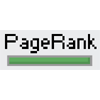Google PageRank Sculpting For SEO Profit (Part 2)

Each website is going to be different depending upon its goals which is why information on how to sculpt PR (and for which pages it is important) is so sparse. It is important to focus on how potential visitors can find your site.
For a local website where displaying the physical address is essential, I would highly recommend not adding the nofollow attribute to links pointing to your contact page. However, if you put your physical address on all your pages (which I highly recommend for all website promote a local product or services) you may be able to nofollow that specific page. Again, the point is to evaluate your website and develop a strategy before you start applying nofollow on individual links to web pages.
Before proceeding into the actual implementation of PR Sculpting, let's first discuss when and why PR Sculpting should NOT be used.
- A way to cut corners on your initial SEO. You still need to develop well thought out website with SEO in mind from day one. It would be best to include PR Sculpting in the beginning when putting together your SEO Checklist.
- A poorly designed internal linking structure. PR Sculpting isn't meant to be used as a way to compensate for poorly designed site architecture.
- A substitute for link building. If you don't have any incoming links to start with you really don't have much to sculpt, now do you?
Now that we have outlined what PR Sculpting is and the potential pitfalls, we can get into how to use this strategy for your SEO benefit.
- Track everything - Make sure you mark the date you started so you can go back and look at your analytics. Did the PR Sculpting make any difference in the amount of traffic my site was receiving? Google updates their PR every 3 months at best and the publicly listed Google PR may or may not be accurate. Your goal should not be to increase your Google PR number but rather the amount of traffic you're receiving.
- Do a complete search engine ranking report - Keep a record of how you were performing with your keywords on the SERP's so after your do some PR Sculpting you can go back and check its effectiveness.
- Check backlinks on all of your webpages - First, see what kind of incoming links you have to play with. You may discover that some of your internal pages have some incoming links and are worth sculpting.
- Cover your bases - Again, I can't state this enough, be absolutely sure if you want a page to show up in the Search Engine index's make sure it can spidered and indexed via another means other than the link with the nofollow attribute. i.e. XML Sitemap.
Other than the obvious (About Us/Email Us, Login/My Account, Privacy Policy/Legal Notice, Customer Support/Help Center, Testimonials, View Shopping Cart) what are some other ways to use PR Sculpting?
The classic example for using PR Sculpting is if you have an ecommerce site with multiple products you are selling on each webpage. Say a webpage has over 50 products and each product has 3 different links pointing to the same webpage. One link is a text link with the product model name in the anchor text, one is an image link, and one is a " click here" text link. it would make sense to nofollow the image and "click link in order just pass on juice through which has a keyword anchor text. this method can be done number of different applications. creative.
Although most PR Sculpting starts with your index page because typically your index page has the most incoming links and thus the highest Google Page Rank, don't limit yourself to your index page. For example let's say you have created a great new magic widget that's become a great new linkbaiting vehicle for your website. Why not direct all those incoming links to your index page or top converting product page. So PR Sculpting doesn't always have to be top level down it can work in reverse as well.
While many argue the value of Google PR Sculpting I would generally recommend this technique if done correctly. In addition, don't think you need a site with thousands of internal pages for this tactic to successful. The ratio is still the same. If you nofollow one link on a site with only ten internal webpages versus a site with thousands of internal pages you are actually make more of a difference with the smaller website. Also keep in mind Google PageRank is by no mean the end all be all to ranking well. I still see pages with lower PageRank ranking higher on the SERP's than pages with higher PageRank.
PageRank is just one of thousands of factors that go into a Search Engine Algorithm. I'm not advocating by any means that this is your silver bullet to crack into the top 10 for a search term you have been gunning for years now. Good SEO still take a lot of time and effort. But with all that effort you have spent on link building, PR Sculpting is a viable means to direct all of that effort in a more effective manner. Just another piece in an attempt at solving the SEO puzzle.
We'd like to hear from you... Are you implementing the nofollow tag to your internal links, have you seen any positive/negative results on your search engine rankings and/or SE traffic. Is PR Sculpting a useful SEO strategy? Let us know; register and comment now.









